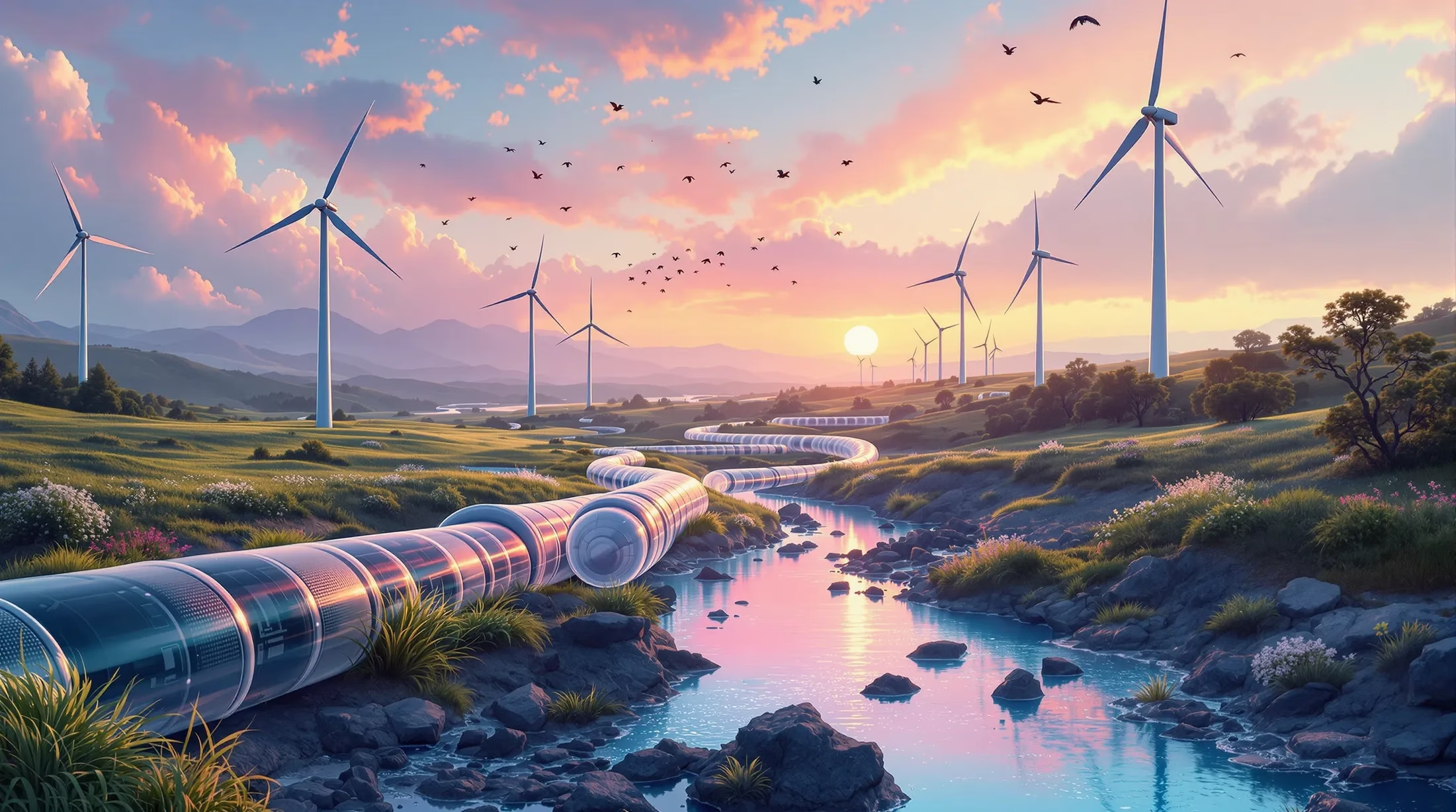What Does an Environmental Engineer Do? Exploring Their Roles and Responsibilities
Discover the vital role of environmental engineers who stand at the forefront of protecting our planet while enabling sustainable development. These professionals combine expertise in engineering, science, and environmental protection to create innovative solutions for today’s most pressing ecological challenges.
Understanding the Role of an Environmental Engineer
Environmental engineers are problem solvers who develop innovative solutions to environmental challenges using principles from engineering, soil science, biology, and chemistry. They work at the intersection of human development and nature, creating systems that protect our planet while allowing for necessary growth and infrastructure. Their primary focus encompasses designing and implementing strategies for waste management, pollution control, and sustainable development initiatives.
These professionals serve as guardians of environmental compliance, ensuring that projects and operations adhere to increasingly complex environmental regulations. By conducting thorough assessments and creating detailed remediation plans, environmental engineers help organizations minimize their ecological footprint while maintaining operational efficiency. Their work extends beyond mere compliance to actively improving environmental conditions through innovative design and technological applications.
Key Responsibilities of Environmental Engineers
- Monitoring environmental conditions through field sampling of water, soil, and air quality
- Generating comprehensive environmental reports and recommendations
- Evaluating hazardous-waste management systems
- Developing regulations to prevent environmental mishaps
- Assessing environmental impact of proposed construction projects
- Implementing pollution control measures
Skills Required for Environmental Engineering
| Technical Skills | Soft Skills |
|---|---|
| Analytical thinking | Communication abilities |
| Technical software proficiency | Problem-solving capabilities |
| Understanding of environmental laws | Project management |
| Interdisciplinary scientific knowledge | Stakeholder engagement |
Environmental Impact Assessment and Management
Environmental impact assessment (EIA) is a cornerstone of an environmental engineer’s responsibilities. These professionals apply scientific and engineering principles to evaluate how human activities might affect various environmental components—water quality, air quality, habitat integrity, biodiversity, agricultural capacity, traffic patterns, and noise levels. Through methodical analysis and data collection, they identify potential environmental risks before projects begin, allowing for proactive rather than reactive approaches to environmental protection.
Conducting Environmental Impact Assessments
- Establishing baseline conditions through field sampling
- Using predictive modeling for impact forecasting
- Examining direct and indirect environmental effects
- Quantifying impacts across different temporal scales
- Creating transparent documentation for regulatory compliance
Strategies for Effective Environmental Management
Effective environmental management extends beyond assessment to include implementing practical solutions that minimize ecological disruption. Environmental engineers design pollution control systems tailored to specific contexts, from industrial emissions scrubbers to constructed wetlands for natural water filtration. They develop comprehensive environmental management plans that outline responsibilities, timelines, and performance indicators, ensuring that mitigation measures are implemented correctly and maintained over time.
Modern environmental management increasingly incorporates adaptive strategies that allow for adjustment as conditions change or new information becomes available. Environmental engineers establish monitoring programs to track environmental parameters, using real-time data to fine-tune management approaches. They also apply the hierarchy of controls—prioritizing elimination of environmental hazards, followed by substitution with less harmful alternatives, engineering controls, administrative measures, and finally personal protective equipment.
Sustainable Development and Environmental Engineering
Environmental engineers play a pivotal role in advancing sustainable development by applying their multidisciplinary expertise to balance human needs with environmental preservation. They design systems and processes that minimize ecological footprints while maximizing resource efficiency, serving as architects of sustainability in complex industrial and urban environments.
The integration of environmental engineering with sustainable development spans multiple sectors, including:
- Construction and infrastructure development
- Manufacturing processes
- Urban planning initiatives
- Energy production systems
- Resource management programs
Role in Promoting Sustainable Practices
Environmental engineers catalyze sustainable practices by developing innovative solutions that address immediate challenges while considering long-term ecological impacts. Their technical expertise translates sustainability theories into functional systems through:
- Designing waste management systems focused on resource recovery
- Creating pollution control mechanisms for ecosystem protection
- Implementing water conservation techniques
- Conducting life-cycle assessments
- Developing science-based environmental regulations
Involvement in Renewable Energy Projects
| Project Type | Engineering Contribution |
|---|---|
| Solar Installations | Site assessment, soil preservation strategies |
| Wind Farms | Wildlife protection measures, pattern analysis |
| Hydroelectric Facilities | Water management plans, ecosystem impact assessment |
| Smart Grid Systems | Energy storage solutions, intermittency management |
Pollution Control and Waste Management
Environmental engineers develop comprehensive systems that address multiple pollution domains – air, water, and soil. They create integrated approaches that consider pollutant interactions across environmental systems while balancing regulatory requirements with practical implementation needs.
Techniques for Pollution Control
- Source reduction strategies for preventing contaminant release
- Wet scrubbers for industrial exhaust treatment
- Catalytic converters for harmful gas transformation
- Advanced filtration systems for contaminant capture
- Emissions monitoring networks
- Carbon capture technologies
- Vapor recovery systems for petroleum operations
Effective Waste Management Solutions
Environmental engineers address waste management challenges through integrated systems encompassing collection, processing, recycling, and disposal. They design multi-layered secure landfills that prevent groundwater contamination, implement methane capture systems for energy generation, and develop composting facilities that convert organic waste into valuable soil amendments. These engineered solutions effectively transform waste from an environmental liability into a potential resource.
- Materials recovery facilities with automated recyclables sorting
- Waste-to-energy plants generating electricity from non-recyclable materials
- Anaerobic digesters processing organic waste while producing biogas
- Chemical neutralization processes for hazardous materials
- Stabilization techniques preventing contaminant migration
- Secure disposal facilities for long-term hazardous waste isolation
Water Resources Management in Environmental Engineering
Environmental engineers safeguard water resources through comprehensive management of rivers, reservoirs, and groundwater systems. Their expertise ensures consistent supply for diverse needs while maintaining environmental balance. Using sophisticated modeling tools, they develop efficient water storage, treatment, and distribution systems that serve multiple purposes – from providing drinking water to supporting ecosystem health.
| Management Area | Engineering Solutions |
|---|---|
| Supply Management | Watershed assessments, demand analysis, storage systems |
| Distribution Systems | Pressure control, flow optimization, energy efficiency |
| Flood Protection | Community safeguards, habitat preservation, nature-based solutions |
Ensuring Sustainable Water Use
Environmental engineers implement integrated approaches to water conservation through innovative technologies and management strategies. They develop comprehensive solutions including water-efficient fixtures, large-scale reclamation systems, and detailed distribution network audits to minimize waste. Their expertise extends to groundwater management, preventing over-extraction and implementing aquifer recharge projects.
- Sustainable groundwater extraction rate determination
- Rainwater harvesting system design
- Managed aquifer recharge projects
- Drought management planning
- Climate change adaptation strategies
Addressing Water Pollution Challenges
Environmental engineers tackle water pollution through comprehensive approaches combining prevention, treatment, and remediation. They establish sophisticated monitoring networks for early contamination detection and design specialized treatment systems for various pollution sources. Their solutions incorporate both traditional and innovative methods, from advanced wastewater treatment to constructed wetlands for natural purification.
- Industrial pretreatment system design
- Advanced contaminant removal processes
- Natural treatment system implementation
- Waterway remediation planning
- Emerging pollutant management strategies
Environmental engineers guide organizations through complex regulatory frameworks while implementing technically sound environmental solutions. They maintain expertise in evolving environmental laws across multiple jurisdictions, developing comprehensive compliance strategies that often exceed minimum requirements. Their work encompasses air emissions standards, water discharge permits, waste handling requirements, and land use regulations, ensuring organizations maintain continuous compliance while optimizing operational efficiency.
Understanding Key Environmental Laws
Environmental engineers must master foundational environmental legislation that governs their professional practice. The United States regulatory framework includes several critical laws that shape environmental protection efforts:
- Clean Air Act – regulates emissions from both stationary and mobile sources
- Clean Water Act – establishes structures for controlling water pollutant discharges
- Resource Conservation and Recovery Act – provides framework for hazardous and non-hazardous waste management
- Comprehensive Environmental Response, Compensation, and Liability Act – addresses contaminated site cleanup protocols
These professionals analyze how various regulations interact across jurisdictions while staying current through environmental protection agencies, industry associations, and legal updates. Their expertise enables them to address complex challenges like acid rain, global warming, ozone depletion, and industrial pollution through legally compliant and scientifically sound methods. By interpreting regulations within their organizations, they transform legal requirements into practical operational protocols that balance environmental protection with business objectives.
Compliance and Reporting Requirements
Environmental engineers establish comprehensive compliance management systems that monitor regulatory requirements across multiple environmental media. Their responsibilities include:
- Designing environmental monitoring programs for emissions and discharges
- Preparing detailed compliance documentation and reports
- Coordinating environmental audits and facility inspections
- Managing discharge monitoring reports and hazardous waste manifests
- Developing emissions inventories and annual compliance certifications
- Serving as technical liaisons with regulatory agencies
| Compliance Activity | Purpose |
|---|---|
| Environmental Monitoring | Track emissions, discharges, and potential impacts |
| Documentation Management | Maintain detailed records of environmental performance |
| Regulatory Liaison | Facilitate communication with enforcement agencies |
| Corrective Action Planning | Address and prevent compliance violations |







